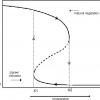 Planning under Uncertainty: Regime shifts, Resilience and Innovation in Urban Ecosystems
Planning under Uncertainty: Regime shifts, Resilience and Innovation in Urban Ecosystems
Cities face unprecedented challenges. Global environmental change is placing increasing pressure on ecosystem functions and their ability to support human activities. The exponential growth of human activities is a key driver of such change, so much so that Planet Earth has certainly entered a new Epoch—the Anthropocene, in which humans have as much influence as nature itself (Steffen et All 2007).
Urban regions pose enormous challenges to ecological and human well-being from local-scale atmospheric and water pollution to global-scale phenomena such as climate change threatening ecosystem’s capacity to deliver important ecological services (Alberti 2010). At current rates of urban growth, expected global land cover change will result in significant loss of habitats in key biodiversity hotspots (Seto et al. 2012). Urban regions are also the place where the majority of the human population will face the potential consequences of expected irreversible changes in climatic, hydrological, and ecological regimes such as flooding, droughts, sea level rises (Figure 1).
Ecological resilience in urban ecosystems: Linking urban patterns to human and ecological functions
Alberti, M. and J. Marzluff. 2004. Urban Ecosystems 7:241-265.
Abstract. Urban ecosystems evolve over time and space as the outcome of dynamic interactions between socio-economic and biophysical processes operating over multiple scales. The ecological resilience of urban ecosystems—the degree to which they tolerate alteration before reorganizing around a new set of structures and
processes—is influenced by these interactions. In cities and urbanizing areas fragmentation of natural habitats, simplification and homogenization of species composition, disruption of hydrological systems, and alteration of energy flow and nutrient cycling reduce cross-scale resilience, leaving systems increasingly vulnerable to shifts
in system control and structure. Because varied urban development patterns affect the amount and interspersion of built and natural land cover, as well as the human demands on ecosystems differently, we argue that alternative urban patterns (i.e., urban form, land use distribution, and connectivity) generate varied effects on ecosystem dynamics and their ecological resilience.We build on urban economics, landscape ecology, population dynamics, and complex system science to propose a conceptual model and a set of hypotheses that explicitly link urban pattern to human and ecosystem functions in urban ecosystems. Drawing on preliminary results from an empirical study of the relationships between urban pattern and bird and aquatic macroinvertebrate diversity in the Puget Sound region, we propose that resilience in urban ecosystems is a function of the patterns of human activities and natural habitats that control and are controlled by both socio-economic and biophysical processes operating at various scales. We discuss the implications of this conceptual model for urban planning and design.
[project_list page=”1157″]

